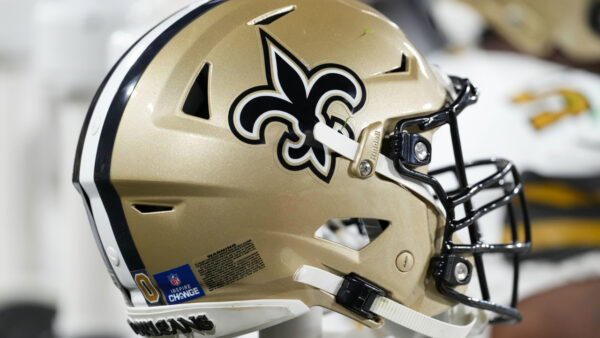


NFL helmet headsets: Who wears them?

Not all NFL players have a headset in their helmets. Only one offensive and one defensive player on each team can wear helmets equipped with communication devices. These devices help relay information from the coaches during games.
NFL players often face challenges in hearing each other on the field due to stadium noise and massive crowds. To solve this, the league introduced “radio helmets” with built-in speakers in 1994. These helmets allow coaches to communicate critical instructions directly to one offensive and one defensive player.
Come behind the scenes with us as we built the new 2024 @NFL on-field alternate helmets 🔥 pic.twitter.com/e2zSZiiG7q
— Riddell Sports (@RiddellSports) August 20, 2024
Typically, the quarterback wears the headset on offense, as they lead the team and relay instructions. On defense, it’s usually the middle linebacker or a safety, who acts as the defensive leader. These players’ helmets are marked with a green dot to signal to referees that they are using communication devices.
The system allows only one-way communication. Players cannot talk back to coaches. If a player needs clarification, they can use hand signals to request a repeat of instructions.
The communication system automatically shuts off when the play clock reaches 15 seconds. This ensures the quarterback or defensive captain makes final decisions on the field without input from the sidelines. The speaker-only setup prevents two-way communication, adhering to league rules.
The concept of headsets in helmets dates back to 1956. John Campbell and George Sarles, inventors from Ohio, approached Cleveland Browns coach Paul Brown with a radio receiver prototype. Brown tested it during an exhibition game against the Detroit Lions. The device allowed him to relay plays directly to the quarterback, eliminating the need for substitute players to deliver messages.
Headset in the helmet allows you to help your qb lead the huddle. Instant feedback is amazing https://t.co/xDgkmSYHsR
— Nicholas Quinn (@CoachNickQuinn) January 3, 2025
The Lions’ coaching staff eventually discovered the hidden transmitter, leading to its ban after just three games. It took nearly four decades before the NFL reintroduced this technology in 1994, revolutionizing on-field communication.
The NFL has strict rules for using helmet communication:
These rules ensure fairness and limit the impact of technology on gameplay.
Quarterbacks are the most logical choice for helmet communication. They orchestrate the offense and manage plays. Coaches often share key details, like play calls or defensive adjustments, through the speaker system. However, quarterbacks prefer varying levels of input. Former NFL quarterback J.T. O’Sullivan explained, “Some quarterbacks want just the play call, while others are okay with hearing more details from the coach.”
Radio helmets are now essential in the NFL, providing real-time tactical advantages. They simplify communication, reduce delays, and allow faster adjustments. Despite challenges like crowd noise, the technology has proven reliable, significantly enhancing the pace and strategy of the game.
Read More: Top 10 NFL Contract Incentives to watch out for in Week 18
Image: Imagn
I write about sports because, well, it brings in the big bucks! I’m not some lifelong analyst or stats guru, truth being told, you’ve probably never heard of me!—I just know how to research, write, and make things sound good. That’s the job!
Got into sports media the same way most people do: by (fortunate) accident. Started with SEO writing, took on a few sports gigs, and now here we are! I cover games, trades, player drama—whatever needs words.
Favorite part? The chaos. One day it’s a blockbuster trade, the next it’s a goat running onto the field. Never boring.
Message to readers: If you want deep analysis, there are people for that. If you want sharp, no-BS writing that actually makes sense, stick around.
We use cookies for ads and to improve your experience. By continuing on the site, you agree to our Privacy Policy. Read more about it
 NFL
NFL 
